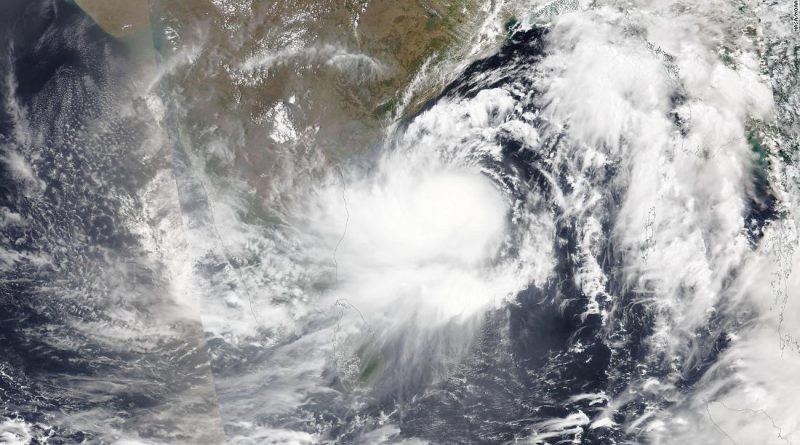Tropical Cyclone Asani threatens eastern India as another brutal heat wave continues across the country
While the cyclone may bring some relief from the heat, it will be too far away to affect most of the country — and could make the heat worse for some.
As the storm moves on a northwest track, areas across eastern India’s central coast will feel widespread wind and rain impacts.
Asani is the second storm to impact India this season. The first storm, in March in southern India, was not named.
Slow-moving storm could bring catastrophic rain
By Thursday, the storm will most likely begin to curve more north-northeast, riding along the coast and impacting Odisha.
The interaction with land will cause the storm to gradually weaken, though it still will produce quite a bit of rainfall as it slows.
“Now that Asani’s forward speed has slowed significantly, longer duration heavy rains are possible along the coast, increasing the possibility of flooding rainfall,” CNN meteorologist Chad Myers said.
When it comes to death and destruction with tropical cyclones, rain is a key factor to consider.
Parts of India’s coast, near the storm’s landfall location, could see as much as 150 mm (6 inches) of rainfall during the next few days.
Asani’s cloud cover could bring some relief from the heat along portions of the coast. However, the storm also could mean those further inland see soaring temperatures.
Not enough to relieve scorching temperatures
This storm arrives amid a brutal heat wave impacting much of central India. Temperatures there soared Tuesday as high as 45 degrees Celsius (113 degrees Fahrenheit).
This heat wave continues a brutal stretch of heat in April across parts of the country, including New Delhi.
“They experienced 19 days of the month with a high temperature above 40 degrees Celsius (104 degrees Fahrenheit), which is well above their average April high temperature of 37 degrees Celsius (98.6 degrees Fahrenheit),” CNN meteorologist Robert Shakelford said. “This heat also was significant since it was the hottest April for northwest India, well above their April normal.”
Asani could make the heat wave worse because of the effect of rapidly rising air in and around the eye, or low-pressure center, and sinking air and higher pressure along its periphery.
“This will act to limit any cloud formation, leading to full sun and warming temperatures,” CNN meteorologist Brandon Miller said. “It brings rainfall and cooler temperatures to areas it hits, but for central and northern/western parts (of India), it would tend to worsen the heat wave.”
The only relief for the rest of India will come with the onset of monsoons.
The start of monsoon season
Cyclones typically don’t occur during the monsoon season because too much wind shear — strong upper level winds that tear tropical systems apart — in the atmosphere tend to prohibit development.
However, during the season’s start, cyclones can develop while wind shear is still rather weak.
While the monsoon — which delivers relief from relentless heat — will begin reaching the southernmost areas of India by the end of May, it doesn’t typically reach New Delhi until the beginning of July, leaving plenty of room for more days of dangerous heat.




